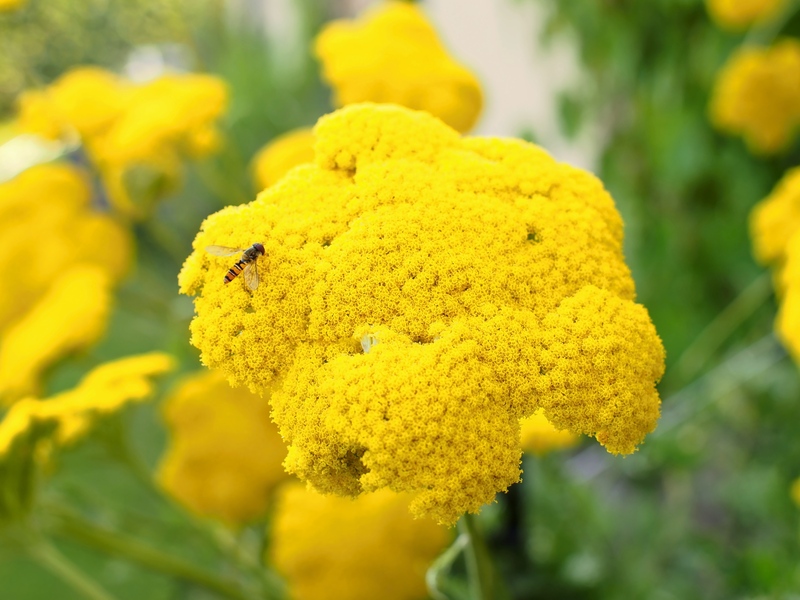Building a Garden That Unlocks Your Child's Imagination
Posted on 10/06/2025
Building a Garden That Unlocks Your Child's Imagination
In today's fast-paced digital world, nurturing creativity in children is more important than ever. One of the most effective ways to inspire creativity, foster curiosity, and enhance learning is by creating a garden designed specifically to unlock your child's imagination. Whether you have a sprawling backyard or a compact urban space, a thoughtfully crafted imaginative children's garden can be a magical retreat for wonder and adventure.

Why Gardens Inspire Imagination in Children
Nature has an innate ability to spark wonder, encourage exploration, and promote imaginative play. Studies show that children who spend time outdoors in green environments tend to be more creative, have stronger problem-solving skills, and show improved emotional well-being. A well-designed child-friendly garden can:
- Stimulate the senses with colors, textures, and scents
- Encourage storytelling and role-playing
- Provide space for both energetic play and quiet contemplation
- Teach stewardship of the earth and living things
- Offer hands-on learning opportunities
Unlocking your child's imagination through gardening isn't just about planting flowers--it's about cultivating a space where dreams can take root.
Planning Your Imagination-Driven Children's Garden
Understanding Your Space and Your Child's Interests
Before you begin, consider the size, sunlight, and safety of your outdoor space. Observe your child's unique interests: do they love digging in the dirt, pretending to be explorers, or making up fairy tales? These insights will steer your design and help unlock your child's creativity.
Key Elements of an Imaginative Children's Garden
- Sensory Play Areas: Incorporate elements that stimulate sight, sound, touch, taste, and smell. Examples include scented herbs, tactile grasses, or musical wind chimes.
- Miniature Worlds: Craft fairy gardens, dinosaur lands, or tiny villages for storytelling and role-play.
- Hideaways and Nooks: Create small, cozy spots with forts or bean teepees where children can dream and read.
- Interactive Installations: Include stepping stones, balance logs, or outdoor chalkboards for active play and artistic expression.
- Wildlife Havens: Attract butterflies, birds, and pollinators with bug hotels, birdhouses, and native plants.
- Edible Gardens: Grow strawberries, cherry tomatoes, or herbs that children can smell, pick, and taste.
Ideas to Build a Magical Garden That Fosters Creativity
1. Fairy Tale Pathways
Nothing stirs a child's imagination like a winding path. Use stepping stones, bark mulch, or mosaics to create a journey through your garden. Hide surprises along the way--painted rocks, tiny doors, or a gnome or two--for adventure and discovery.
2. Grow a Living Hideaway
Construct "living teepees" using bamboo poles and fast-growing climbers like peas or morning glories. These green structures make excellent hideouts for reading, dreaming, or playing house--perfect for unlocking a child's imagination with nature.
3. Water Features for Wonder
A small pond, bubbling fountain, or even a birdbath provides endless fascination. Children can watch tadpoles transform, imagine water dragons at play, or float tiny boats and learn about ecosystems--fueling both curiosity and storytelling.
4. Miniature Villages and Fairy Gardens
Create themed garden zones with miniature houses, painted stones, and little figurines. These scenes invite children to invent stories, develop characters, and make up elaborate adventures right in their backyard.
5. Sensory Garden Beds
Designate sections of the garden to stimulate each sense. Plant lamb's ear for touching, lavender for smelling, sunflowers for seeing, chimes for hearing, and strawberries for tasting. Sensory-rich environments are profound for imaginative play in children's gardens.
6. DIY Art and Craft Spaces
Set up an outdoor art area with rocks to paint, watercolors, or chalk murals. Encourage creativity by displaying their work alongside the flowers. Use natural materials like pinecones, seed pods, or leaves for crafts.
7. Enchanted Story Circles
Create a storytelling circle with logs, big stones, or colorful cushions. This cozy gathering spot can become the setting for tales of adventure, mystery, and magic--sparked by the sights and smells of your garden. _Unlocking imagination_ starts with a place to share dreams.
8. Interactive Learning Stations
Incorporate weather stations, magnifying glasses, sundials, or bug viewers to encourage observation and science exploration. You can label plants, create a compost site, or introduce simple gardening tasks for kids.
Choosing the Best Plants for a Children's Imagination Garden
Not all plants are equal when it comes to stimulating a child's creativity and imagination. Opt for safe, non-toxic, and fast-growing varieties that engage the senses and thrive in your climate.
Great Sensory and Playful Plants for Kids:
- Sunflowers: Towering and bright, perfect for secret spaces or sunflower houses.
- Lamb's Ear: Fuzzy leaves that children love to touch.
- Nasturtiums: Easy to grow and edible flowers with a peppery taste.
- Mint and Lemon Balm: Scented herbs for touch and smell activities.
- Snapdragons and Foxglove: Intriguing shapes that invite stories and close observation (ensure safety for foxglove).
- Scented Geraniums: Leaves with delightful fragrances.
- Sensory Grasses: Stipa tenuissima, fountain grass for movement and listening to rustling sounds.
- Edible Fruits: Strawberries, blueberries, and cherry tomatoes for picking and snacking.
Engaging the Senses and the Mind: Sensory Gardens for Children
A garden rich in sensory input is a powerful tool to unlock creativity and imagination in children. Engaging all five senses fosters curiosity, calms anxieties, and encourages children to create their own games and stories. Consider:
- Touch: Use plants with various textures, smooth rocks, or sand pits.
- Sight: Include vibrant blooms, colorful pots, and rainbow details.
- Smell: Plant fragrant herbs, flowers, and even scented bark chips.
- Sound: Add wind chimes, bamboo fences, tall grasses, or a water feature.
- Taste: Grow a selection of edible plants your child can safely sample.
Parent-Child Gardening Activities to Unlock Imagination
The heart of unlocking imagination in the garden lies in shared experiences. Gardening together builds bonds and creates opportunities for storytelling, exploration, and discovery. Here are some engaging activities:
- Storytime in the Garden: Read classic fairy tales or make up your own stories inspired by your plants and garden creatures.
- Nature Scavenger Hunts: Create lists or photo cards of plants, insects, and garden features for children to find.
- Make Natural Art: Gather leaves, stones, or petals to create mosaics, mandalas, or fairy crowns.
- Plant a Theme Garden: Build areas like a "Pizza Patch" (tomatoes, basil, oregano) or "Butterfly Garden" to match your child's interests.
- Invent Garden Games: Play hide and seek, make obstacle courses, or create magical potions with leaves and flowers (always double-check plant safety).
Safety Considerations in Children's Imagination Gardens
A vital part of building a child-friendly imaginative garden is safety. Here's how you can ensure that creativity is coupled with well-being:
- Choose non-toxic, kid-safe plants for every area within reach.
- Use soft, cushioned materials for play areas (mulch, sand, or turf).
- Install fencing or clear boundaries if your garden has ponds or tools.
- Keep tools child-sized and supervise younger children.
- Provide shade and hydration for comfort during playtime.
Unlocking Imagination Through Seasonal Changes
Every season brings new opportunities in a children's garden:
- Spring: Watch bulbs and seeds sprout. Encourage children to draw their growing plants or predict which flower will bloom first.
- Summer: Pick berries or tomatoes, harvest herbs, and enjoy shady hideouts.
- Autumn: Collect colorful leaves, build bug hotels, or craft with acorns and pinecones.
- Winter: Observe frosty patterns, feed birds, or collect twigs and pine branches for crafts.
_Learning from the natural world's cycles is a powerful way to unlock imagination and teach life lessons._

Tips for Sustaining a Garden That Sparks Creativity
- Let Children Lead: Involve them in decision-making--let them plant seeds, water, and choose decorations.
- Keep it Playful: Allow for messiness, experimentation, and change over time.
- Welcome Wildlife: Encourage observation of birds, bugs, and butterflies for natural inspiration.
- Provide Unstructured Time: Give space for free play, exploration, and storytelling.
- Rotate Activities: Change crafts, games, and stories to spark new adventures.
Conclusion: Ignite Imagination and Growth in Your Outdoor Space
Planting a children's garden that unlocks imagination is one of the greatest gifts you can give your child. In a magical garden, everyday moments become extraordinary--sticks transform into wizard wands, flowers become fairy skirts, and every stone is a stepping stone to a new adventure.
With thoughtful planning and a little creative spirit, any outdoor space can become a haven for wonder, joy, and lifelong learning. Start with a small corner or a few pots, involve your child in the process, and watch as your garden blossoms into a world where imagination knows no bounds. Cultivate creativity, grow memories, and unlock a world of possibility--one magical plant at a time.
Build a garden that unlocks your child's imagination, and you'll cultivate much more than flowers--you'll nurture resilience, curiosity, and a lifelong love for the wonders of the natural world.



